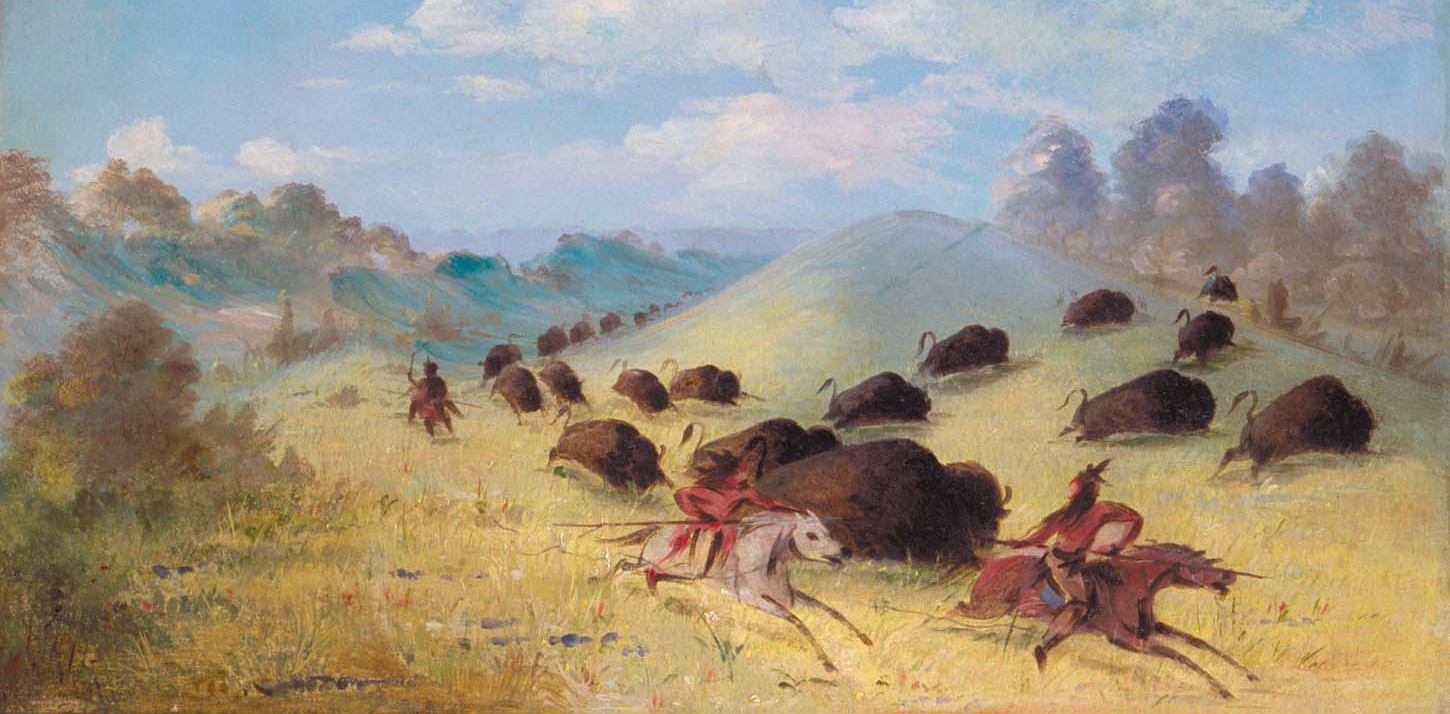
This article is the first chapter, now available as a pdf from publishers Winter Oak, of The Stifled Soul of Humankind. The book is also available from Active Distribution.
“I was born upon the prairie, where the wind blew free and there was nothing to break the light of the sun. I was born where there were no enclosures and where everything drew a free breath. I want to die there and not within walls”.1 These were the words of Parra-Wa-Samen (Ten Bears) of the Yamparika Comanches. For his people, as Dee Brown explains, “land came from the Great Spirit, was as endless as the sky and belonged to no man”.2 Here, surely, is an unchanging truth. Land is the surface of the Earth, which is billions of years old. How can it be said to be “owned” by transient individuals of one particular species temporarily populating its surface? And yet the huge majority of human beings born today find themselves denied the natural right to live and breathe freely on the planet on which they are born – of whose living substance, indeed, they are part.
The shocking depth of this dispossession is difficult for us to fully understand, from our limited perspective inside the very pit of this reality. It is also hard for us to grasp how we have slipped to this low point and how we have stayed there for so long. It is not difficult to imagine, of course, that there once might have been greedy, violent men (perhaps women, too!) who wanted to grab land for their own selfish use and exclude others. But, first, there must have been the idea that, contrary to the oldest traditions, land was not simply part of nature but could “belong” to somebody in particular. Before the greedy men could desire to own it for themselves, there must have been a novel conception of land as being “ownable”. How did that happen? And then, once they had made their move and claimed an area for themselves and their kin, why did everyone else, the majority after all, let them get away with it? How did their theft become permanent? Crucially, at what point was their theft no longer seen as theft? At what point did it appear to be right and proper – so right and proper, in fact, that any attempt to undo this original theft would itself be considered a crime?
Ultimately, we are talking here about the origins of authority, which cannot be separated from the idea of land – the abstract notion of authority backs up the possession of land and thus wealth, while the possession of wealth provides the physical resources to enforce that authority in its real incarnation. How did Authority (with a capital ‘A’), as a force in its own right, come to pervert human society in this way? We will consider its metaphysical aspects later in these pages (Chapter 10), but for the meantime all we need to know is that somehow, tragically, the land thieves got away with it. Over the centuries, people forgot that the land once belonged to nobody – could belong to nobody – and accepted the twin lies that not only did it indeed belong to somebody, but also that the persons who “owned” the land did so fairly.
Nowhere was this enforced forgetting more advanced than in Britain, a thoroughly corrupt little kingdom whose malevolent influence on world history was for centuries totally disproportionate to its size and natural wealth. Here, the historic theft of land from the Great Spirit, or the collective community if you prefer, intensified with waves of land enclosures, which began in 1230 and peaked in the 1790s. There were, of course, always a few perceptive dissidents who could see clearly what was happening and were brave enough to denounce it, notably Gerrard Winstanley, a spokesman for The Diggers, who tried to reclaim for the people a small patch of land in Surrey in 1649, the year that the English Revolution took the head of Charles I. He told the landed class, in one of his characteristic broadsides, that “the power of enclosing land and owning property was brought into the creation by your ancestors by the sword; which first did murder their fellow creatures, men, and after plunder or steal away their land, and left this land successively to you, their children. And therefore, though you did not kill or thieve, yet you hold that cursed thing in your hand by the power of the sword; and so you justify the wicked deeds of your fathers, and that sin of your fathers shall be visited upon the head of you and your children to the third and fourth generation, and longer too, till your bloody and grieving power be rooted out of the land”.3 He had no difficulty in seeing through the layers of deceit justifying “ownership” of the land, declaring: “The poorest man hath as true a title and just right to the land as the richest man… True freedom lies in the free enjoyment of the earth”.4
Throughout the enclosures, there was constant resistance from the population – which is why the process took so long to complete. E.P. Thompson relates that such protests “could be massive and very violent, as was the dispute in Sheffield in 1791. A private act had been passed to enclose six thousand acres of common and waste adjacent to the town, compensating the poor with two acres only. This precipitated spectacular riots… The enclosure commissioners were mobbed; the debtors’ gaol was broken open and the prisoners released; there were cries of ‘No King!’ and ‘No Taxes!’”.5 A parallel process, though much more suddenly and severely imposed, took place in the Highlands of Scotland, where clearances of people to make room for sheep, and then deer, occurred in two main periods, from 1782 to 1820 and then from 1840 to 1854. Here too, there was resistance, which – like the Sheffield uprising – became a deeper rebellion in the face of repression. John Prebble records one such instance on the island of North Uist in 1849, in which “black flags of defiance”6 flew over a township as the crowds gathered to confront the authorities.
However, the Highland rebels, like the English rebels against enclosure, were up against a rapidly developing system whose armoury included not only the physical force to put down internal opposition but also the arrogance to insist that it had the right to do so. A key to its tightening control was the theoretical concept of “property”. Every square inch had to be “owned” by somebody. Thompson describes how “in the late seventeenth century and certainly in the eighteenth the courts increasingly defined (or assumed without argument) that the lord’s waste or soil was his personal property, albeit restrained or curtailed by the inconvenient usages of custom”.7 Gradually there was “a hardening and concretion of the notion of property in land, and a re-ification of usages into properties which could be rented, sold or willed”.8 The idea of there being any space, anywhere, that was not somebody’s “property” was regarded as unthinkable and dangerous. For instance, an official report in 1851 complained that the New Forest in southern England “has not, and cannot have, an owner” and this meant that its present state was “little less than absolute anarchy”.9
This theoretical assumption of necessary land ownership was not confined to Britain, but applied theoretically to the rest of the world as well. “The concept of exclusive property in land, as a norm to which other practices must be adjusted, was now extending across the whole globe, like a coinage reducing all things to a common measure,” writes Thompson. “The concept was carried across the Atlantic, to the Indian sub-continent, and into the South Pacific, by British colonists, administrators, and lawyers, who, while not unaware of the force of local customs and land systems, struggled to construe these within their own measure of property”.10 The notion of Property, with a capital ‘P’, became an ideal in itself – those who gained from its enforcement understood only too well that it was the foundation on which all their power and wealth was based, as is apparent in the words of Lord Portland, Britain’s Home Secretary, in the 1790s. He warned: “If the employment of Property is not secure, if every Man does not feel that he has power to retain what he possesses so long as he pleases and dispense it at the time, in the manner and for the Price he chuses to fix upon it, there must be an end of Confidence in Industry and of all valuable and virtuous Exertions of all descriptions… the whole Order of things must be overturned and destroyed”.11
To the original lies of the possibility of land ownership, and the rightfulness of specific claims, was thus added another lie – that of a pressing moral imperative behind it. The Highland Clearances were referred to, by the ruling classes, as “improvements” and a similar justification was cited for the general enclosure of common land which, it was argued, would be put to more productive use for the benefit of all. Of course, the point of view behind this approach was very specifically that of those who stood to gain from it. The motivation was really economic, rather than moral, and the benefits would accrue not to the community as a whole, but to the rich. The so-called “idleness” of the population was used as an excuse to evict them from land that could profitably be exploited.
This line of argument was easily exported from the Fenlands of England or the Highlands of Scotland to the vast expanses of North America in the 1870s. Calling for the native people to be thrown off the land, right-wing editor and politician William B. Vickers wrote in the Denver Tribune: “The Utes are actual, practical Communists and the government should be ashamed to foster and encourage them in their idleness and wanton waste of property”.12 There was, needless to say, a certain subtext behind the reference to the Utes’ “wanton waste of property” – as Brown says, the aim of Vickers and his friends was “to push them off those twelve million acres of land waiting to be dug up, dammed up and properly deforested so that fortunes could be made in the process”.13
Behind the very idea of personal “ownership” of land lies the desire to exclude others from it – otherwise, it would not be such an attractive proposition for would-be profiteers. But increasingly there was another important factor motivating the elite’s urge to throw the people off their land: like the earth, the human population was (and is!) regarded as a resource to be exploited to the full. Rural people living simple but happy lives were not only depriving the landowner of exclusive use of the land he claimed to “own”, but were also denying to the ruling class the financial fruits of their labour-unit potential in industrial mills and factories. This was not quite how it was phrased, of course. Christopher Hill notes that a book written in 1663 argued that, thanks to the wonders of enclosure, “people were added to the manufacturing population who previously did not increase the store of the nation but wasted it”.14 This was not about increasing the wealth of the rich, note, but that of the “nation”, that perpetually convenient cloak for the greed and self-interest of the few!
Since one of the main aims of enclosure was, as Hill remarks, to “force men to sole dependence on wage labour, which many regarded as little better than slavery”,15 they were persistently hounded off the land with an array of laws, enforced with the usual violence where necessary. A statute of 1589 made it a crime to build any cottage without at least four acres of land – a blatant attempt to socially cleanse the countryside of poorer people.16 The vagrancy Act of 1656 was directed against “all wandering persons” – there was no escaping the embryonic industrial system by living free in the countryside. For the same purposes, gleaning – the simple gathering of the fruits of nature which had been part of human life since the origins of the species – was now treated as “theft”. Describing a 1788 court case against a couple accused of this heinous crime, Thompson comments: “It is difficult to think of a purer expression of capitalist rationality, in which both labour and human need have disappeared from view, and the ‘natural justice’ of profits has become a reason at law. In the arguments of Steele v Houghton et Uxor we see exposed with unusual clarity the law’s complicity with the ideology of political economy, its indifference to the claims of the poor, and its growing impatience with coincident use-rights over the same soil. As [Lord] Loughborough had it: ‘the nature of property… imports exclusive enjoyment’. And how could enjoyment be exclusive if it did not command the power to exclude from property’s physical space the insolent lower orders?”17
It is worth spelling this out carefully, in order to appreciate the full insidiousness of what was happening. Not only were people being thrown off the land, because they got in the way of money-making “improvements”, but they were also being deliberately deprived of their sustenance in order to make them need money to buy food and thus be forced into paid labour, from which the ruling classes could extract yet more profit.
The tightening of the screws was systematic and relentless. People were forced to become part of a system which grew fatter and stronger by exploiting them. Yves Delhoysie describes how, as early as the Middle Ages, nobles would order peasants’ hand mills destroyed so that they would be forced to take their grain to the nobles’ own mills – paying, of course, the relevant charges.18 Resentment at the stranglehold exercised by millers – middle-men between the people and their food supply – was still in evidence in the 1700s. “Mills were the visible, tangible targets of some of the most serious urban riots of the century”, reports Thompson.19 Meanwhile, seventeenth-century England saw stricter enforcement of game laws, in case the poor managed to maintain some semblance of freedom that way. Writes Hill: “After 1671 gamekeepers had the right to search houses and confiscate weapons. The concentration of power in the hands of the landed class could hardly have been better illustrated. Enclosure and the game laws deprived cottagers of many of their traditional sources of food”.20
The Utes in North America also had to be deprived of their simple-living liberty and forced to adopt “civilized habits” like working for money, according to Nathan C. Meeker, US government agent at the White River Ute reservation from 1878. He complained: “What we call conveniences and comforts are not sufficiently valued by them to cause them to undertake to obtain them by their own efforts”.21 The answer, he felt, was to take away the Utes’ hundreds of ponies so that they could no longer roam and hunt, replacing them with a few draft horses for ploughing and hauling. Then, as soon as the Utes were thus forced to abandon the hunt and remain near the reservation, he would stop issuing rations to those who would not reduce themselves to labouring: “I shall cut every Indian down to the bare starvation point, if he will not work”.22 We see here a deliberate global policy in action. As Los Amigos de Ludd observe, while the emerging world order liked to depict itself as representing reason and liberty, it was in fact shamelessly destroying each and every area of human autonomy.23 The result of this was to force millions of people into what really amounted to slavery – not the manacled inhuman slavery of the plantation worker, it is true, but a slavery born of the fact that working for another’s profit became the only way to survive, once access to the land and its gifts had been denied.
Anarchist thinker Peter Kropotkin bemoans the fact that the son of a Western worker “comes into the world more destitute than a savage… Everything has been appropriated by somebody; he must accept the bargain, or starve”.24 And he goes right to the nub of the question when he asks: “Who would sell his labor power for less than it is capable of bringing in if he were not forced thereto by the threat of hunger?”25 As his fellow anarchist Gustav Landauer concludes: “All ownership of things, all land-ownership is in reality ownership of men. Whoever withholds the earth from others, from the masses, forces these others to work for him. Private ownership is theft and slave-holding”.26
But how is this slavery maintained, how is it that the mass of our fellow humans do not rise up and shake off their chains? Part of the answer is that the activity of “work” has been confused in the dominant mindset by some idea of goodness and we have thus lost sight of the reality of our debased status of dependent servitude. William Morris sees clearly that employment often amounts to nothing more than “slaves’ work – mere toiling to live, that we may live to toil”.27 And he reflects: “Most people, well-to-do or not, believe that, even when a man is doing work which appears to be useless, he is earning his livelihood by it – he is ‘employed’ as the phrase goes; and most of those who are well-to-do cheer on the happy worker with congratulations and praises, if he is only ‘industrious’ enough and deprives himself of all pleasure and holidays in the sacred cause of labour. In short, it has become an article of the creed of modern morality that all labour is good in itself – a convenient belief to those who live on the labour of others”.28 From their opposite perspective, the ruling classes also occasionally admit that the need for the mass of people to work, simply in order to live, is not at all an issue of morality, but of the survival of a parasitical system. Thus Lord Goderich, the British Colonial Secretary, remarked in 1831 with reference to Upper Canada: “Without some division of labour, without a class of persons willing to work for wages, how can society be prevented from falling into a state of almost primitive rudeness, and how are the comforts and refinements of a civilized life to be procured?”29
Apart from this pseudo-morality around working for a living, so helpfully promoted by protestant Christianity and its “work ethic”, the main reason why wage-slavery persists is so obvious it need hardly be stated: violence. Violence was used to force people off the land, whether in England, Scotland, North America, India or Africa. Violence is still being used for the same purposes all over the world. It is used to maintain exploitation and keep people in slave-labour conditions so the rich can continue to prosper at their expense. It is also constantly used to attack the slightest sign of any general mass resistance to the rule of a system which was created by theft and perpetuated by force. Examples are too numerous to need citing.
And yet this visible violence, ubiquitous though it is in both historical and contemporary terms, is nothing more than the tip of an iceberg. Erich Fromm describes the crucial importance of psychological methods in “leading the masses to a situation of attachment and spiritual dependence with regard to the dominant class or its representatives, in such a way as they submit and obey even without the use of violence”.30 Thompson makes the same point in terms of a cultural hegemony which “induces exactly such a state of mind in which the established structures of authority and modes of exploitation appear to be in the very course of nature. This does not preclude resentment or even surreptitious acts of protest or revenge; it does preclude affirmative rebellion”.31
Instead of actual physical violence, therefore, it is often the threat of violence which serves to protect land theft, exploitation and wage slavery. Although the threat is real, and the violence is always in the air and sometimes inflicted, its unremitting brutality is hidden behind the symbolic level on which it is presented on a daily basis. Thompson sees this threat as coded in the very appearance and behaviour of the ruling classes, in this case the gentry of 18th century England: “Their appearances have much of the studied self-consciousness of public theatre. The sword was discarded, except for ceremonial purposes; but the elaboration of wig and powder, ornamental clothing and canes, and even the rehearsed patrician gestures and the hauteur of bearing and expression, all were designed to exhibit authority to the plebs and to exact from them deference. And with this went certain ritual appearances: the ritual of the hunt; the pomp of assizes (and all the theatrical style of the law courts); the segregated pews, the late entries and early departures, at church”.32 Expanding on this aspect of Authority, and the threat of violence on which it depends, he adds: “A great part of politics and law is always theatre; once a social system has become ‘set’, it does not need to be endorsed daily by exhibitions of power (although occasional punctuations of force will be made to define the limits of the system’s tolerance)”.33
There is one principal form in which this theatricality of violence is acted out, in which a thuggish physical threat, an enforced submission, is presented as acceptable and morally commendable behaviour: the law. Essentially, the law is no more than the codification, the elaboration, of the original theft of land. It is the justification, dreamt up retrospectively, for the enormous crime carried out against humankind by those who were happy to reduce their fellows to servitude in the pursuit of their own material self-indulgence. Kropotkin rightly defines the law as “nothing but an instrument for the maintenance of exploitation and the domination of the toiling masses by rich idlers”34 and says law and capital are like twins who “have advanced, hand in hand, sustaining one another with the suffering of mankind”.35 Like the abstract ideas of Property and Authority, Law (with a capital ‘L’) becomes fetishised, held up as some kind of moral god to be worshipped and obeyed regardless of context.
The resistance to the clearances in the Scottish Highlands was therefore not just an “assault on the sacred rights of property”36 but also, as Sheriff Donald Macleod of Geanies complained in 1792, “an actual, existing Rebellion against the Laws”.37 Lord Justice-Clerk Hope, jailing two rebellious Highlanders in 1854, declared: “The course of the Law must have its effect with all, in order to protect all persons high and low; and all must submit whatever their feelings, or rank, or perverted notions of right and wrong, to the authority of the Law… Neither they nor their neighbours can be allowed to suppose that they can live in this kind of wicked and rebellious spirit against the Law. They must be taught submission in the very first instance”.38
Submission is here presented as the opposite of wickedness. Submission to the theft of land (very real and contemporary in this instance) is decreed morally good behaviour – as morally good, perhaps, as spending one’s life working for somebody else’s profit. Crime, taking on the guise of Authority, thus sets itself up as the unique source of moral judgement in an extension of the series of interdependent monopolies it builds up around itself to establish its complete hegemony.
What began as the aftermath of a theft becomes a self-legitimising reality that seemingly can never be challenged, let alone changed. The culture tells us that this is how things have to be, always have been and always must be. In Franz Kafka’s novel The Trial, we are told the story of a man from the countryside who asks for admittance to the Law but is told to wait, by an intimidating-looking door-keeper, an incarnation of the theatricality of Authority. The door-keeper tells him: “If you are so strongly tempted, try to get in without my permission. But note that I am powerful. And I am only the lowest door-keeper. From hall to hall, keepers stand at every door, one more powerful than the other. And the sight of the third man is already more than even I can stand”.39 The man from the country doesn’t try to get past the first door-keeper, but waits in vain outside the door for the rest of his life. As Michael Löwy comments: “The man from the country has let himself be intimidated: it isn’t force that stops him from going in but fear, a lack of self-confidence, false obedience to authority, submissive passivity”.40 It may well have been true that if the man had tried to get inside, he would have been stopped and even killed by those guarding the Law. The physical force at the disposal of Authority is not necessarily an illusion. But by failing to challenge it, by failing to test its physical strength, he makes it easier for it to maintain the lie that it does not in fact rule by violence, but by general consent to its moral rightness and inevitability.
In this way the ruling classes build up a structure of power in which the violence at its core is hidden by an arrangement of mirrors, reflecting back to each other their unfounded claim to moral right. Property and Authority are legitimate in terms of Law. Law is established by Authority. Authority is built on and resourced by Property. Property is secured and protected by Law which, with the blessing of Authority, also threatens or deploys violence against anyone wicked and rebellious enough to challenge the whole scam. There is a name given to this tangled knotwork of theft and lies which protects and perpetuates the criminal behaviour of what is currently the ruling elite. We call it the State.
We can turn again to Kropotkin for a clear definition of this entity: “The State was established for the precise purpose of imposing the rule of the landowners, the employers of industry, the warrior class, and the clergy upon the peasants on the land and the artisans in the city. And the rich perfectly well know that if the machinery of the State ceased to protect them, their power over the laboring classes would be gone immediately”.41 Moral deceit has always been at the centre of the State’s existence. “The state lies in all languages of good and evil,” says Friedrich Nietzsche. “Whatever it says, it lies – and whatever it has, it has stolen”.42
Today, another of the State’s big lies is the notion of “democracy”, which is in truth nothing but an extension of the original fabricated “moral right” dressed up with the phoney symbolic mechanisms of so-called representation and used as further self-justification of the system and its use of repression to maintain its dictatorship. Tom Anderson explains in a 2013 study: “The ‘rule of law’ serves to protect capitalist interests, in the name of public order, security and democracy. By using labels such as ‘terrorist’ and ‘domestic extremist’, particular forms of activity can be cast as beyond the pale, as having crossed the line from legitimate dissent into criminal activity. Meanwhile, activity which does not fundamentally challenge or disrupt the structures of capitalism can be promoted as proof of societies’ ‘democratic’ nature… the ability to define ‘legal’ and ‘illegal’ provides a crucial means by which political dissent is channelled into ‘legitimate’ forms which do not fundamentally threaten capitalist interests, while dissent which cannot be channelled or co-opted is criminalised and rendered illegitimate, pernicious and therefore deserving of repression”.43
What we must never forget is that the State – with its associated concepts of Property, Authority and Law – has never left behind the violence on which it was built, no matter how cleverly it tries to hide it away behind all the theatrical institutions and self-referential assumptions that make up its culture of control. George Granville Leveson-Gower, Marquess of Stafford, Duke of Sutherland, was proud to be known as The Great Improver. He was the richest landowner in Britain, with more than a million acres and tens of thousands of tenants bringing a massive annual income of £300,000. He was “the product of a class to whom Property was becoming a sacred trust and its improvement an obligation that must take precedence over all others”. This class, argues Prebble, “sincerely believed that its own enrichment must bring a greater good to a greater number”.44
And yet, although they may have often found it comfortable to float in this bubble of sanctimonious delusion, Stafford and the other lairds came to know full well that “they could count upon the full power of the Law, backed by bayonets if necessary, to support them in removing their tenants and replacing them with sheep”.45 Betsy Mackay was 16 years old in 1814, when she and her family were violently evicted from their ancestral homes on the Stafford estates. She later recalled: “The people had to escape for their lives, some of them losing all their clothes except what they had on their backs. The people were told they could go where they liked, provided they did not encumber the land that was by rights their own. The people were driven away like dogs who deserved no better”.46
Similar scenes were still being acted out 40 years later, when the women of Strathcarron resisted evictions in 1854. Remembered Donald Ross: “The police struck with all their force… not only when knocking down, but after the females were on the ground. They beat and kicked them while lying weltering in their blood. Such was the brutality with which this tragedy was carried through, that more than twenty females were carried off the field in blankets and litters, and the appearance they presented with their heads cut and bruised, their limbs mangled and their clothes clotted with blood, was such as would horrify any savage”.47
Here is the reality behind the “improvements” carried out by Stafford, behind the “sacred trust” and the moral “obligation” he was supposedly fulfilling. Here is the reality behind Property, the “rule of law” and the power of Authority. Here is the reality behind Order, Progress and Civilization. As Bakunin says of the State, that guarantor and incarnation of all these interconnected violations and falsehoods, essentially it is “nothing else but the negation of humanity”.48
- Parra-Wa-Samen (Ten Bears) of the Yamparika Comanches, cit. Dee Brown, Bury My Heart at Wounded Knee: An Indian History of the American West, (London: Vintage, 1991) p. 242.
- Brown, p. 3.
- Christopher Hill, The World Turned Upside Down: Radical Ideas During the English Revolution, (London: Pelican, 1975) pp. 132-33.
- Hill, p. 133.
- E.P. Thompson, Customs in Common, (London: Penguin, 1993) p. 125.
- John Prebble, The Highland Clearances, (London: Penguin, 1976) p. 258.
- Thompson, p. 134.
- Thompson, p. 135.
- The Office of Woods and Forests, Land Revenue, Works and Buildings, Law Magazine and Quarterly Review of Jurisprudence, n.s. 14/o.s 45 (1851) pp. 31-33. cit. Thompson, p. 107.
- Thompson, p. 164.
- Thompson, p. 280.
- Brown, p. 376.
- Brown, p. 388.
- S. Fortrey, Englands Interest and Improvement, (1663) pp. 19-20, cit. Hill, p. 51.
- Hill, p. 53.
- Hill, p. 43.
- Thompson, p. 141.
- Yves Delhoysie, Le millénarisme et la chute du monde Chrétien, in Yves Delhoysie & Georges Lapierre, L’Incendie millénariste, (Paris: Os Cangaceiros, 2011) p. 72.
- Thompson, p. 221.
- Hill, p. 349.
- Brown, p. 374.
- Ibid.
- Les Amis de Ludd: Bulletin d’information anti-industriel (Los Amigos de Ludd. Boletín de información anti-industriel), numéros un à quatre, (Paris: Petite capitale, 2005) p. 95.
- Peter Kropotkin, Anarchist Communism: Its Basis and Principles, in Kropotkin’s Revolutionary Pamphlets: A Collection of Writings by Peter Kropotkin, ed. by Roger N. Baldwin, (New York: Dover Publications, 1970) p. 55.
- Kropotkin, Anarchism: Its Philosophy and Ideal, in Kropotkin’s Revolutionary Pamphlets, p. 128.
- Gustav Landauer, For Socialism, trans. by David J Parent, (St Louis: Telos Press, 1978) p. 128.
- William Morris, Useful Work Versus Useless Toil (1885) in News From Nowhere and Selected Writings and Designs, ed. by Asa Briggs, (London: Penguin, 1984) p. 119.
- Morris, Useful Work Versus Useless Toil, in News From Nowhere, p. 117.
- Thompson, p. 167.
- Erich Fromm, Zur Psychologie des Verbrechers und der strafenden Gesellschaft, Imago, Band XVIII, 1931, pp. 247-49, cit. Michael Löwy, Rédemption et utopie: le judaïsme libertaire en Europe centrale, (Paris: Éditions du Sandre, 2009) p. 192.
- Thompson, p. 43.
- Thompson, p. 45.
- Thompson, p. 46.
- Kropotkin, Law and Authority, in Kropotkin’s Revolutionary Pamphlets, p. 211.
- Kropotkin, Law and Authority, in Kropotkin’s Revolutionary Pamphlets, p. 207.
- Prebble, p. 44.
- Prebble, p. 36.
- Prebble, p. 238.
- Franz Kafka, The Trial and Metamorphosis, (London: Landmark, 1983) p. 159.
- Löwy, Rédemption et utopie, p. 99.
- Kropotkin, Modern Science and Anarchism in Kropotkin’s Revolutionary Pamphlets, p. 183.
- Friedrich Nietzsche, Thus Spoke Zarathustra: A Book for Everyone and No One, trans. by RJ Hollingdale, (London: Penguin, 1977) p. 76.
- Tom Anderson, When Co-Option Fails in Managing Democracy, Managing Dissent: Capitalism, Democracy and the Organisation of Consent, ed. by Rebecca Fisher, (London: Corporate Watch, 2013) pp. 232-33.
- Prebble, p. 50.
- Prebble, p. 45.
- Prebble, p. 79.
- Prebble, p. 231.
- Michael Bakunin, The Bear of Berne and the Bear of St Petersburg in The Political Philosophy of Bakunin: Scientific Anarchism, ed. by G.P. Maximoff, (New York: The Free Press of Glencoe, 1964) p. 140.
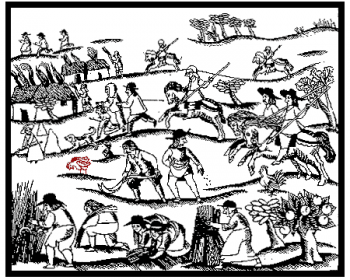
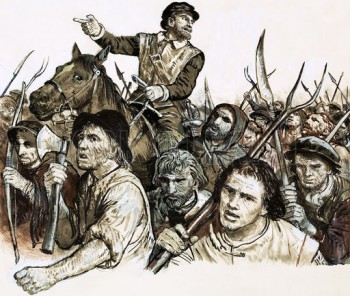
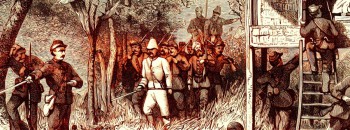
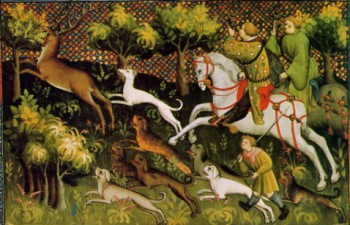
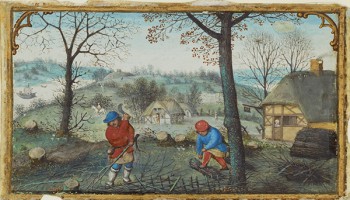

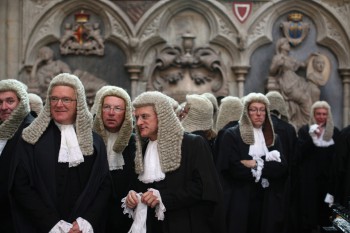

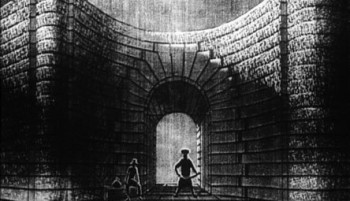
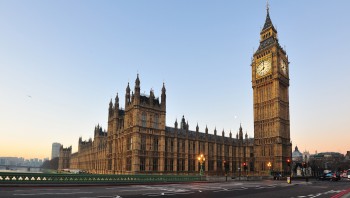
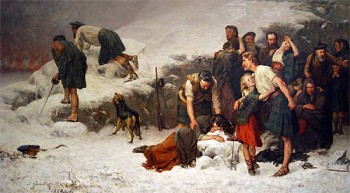
really like this – especially the way it begins with a quote from a free comanche, an indigenous people who clearly demonstrated that a society dedicated to preventing centralized power can survive, thrive, and act as a deterrent to the spread of civilization.
glad you have the patience and skill to research and write articles like this.